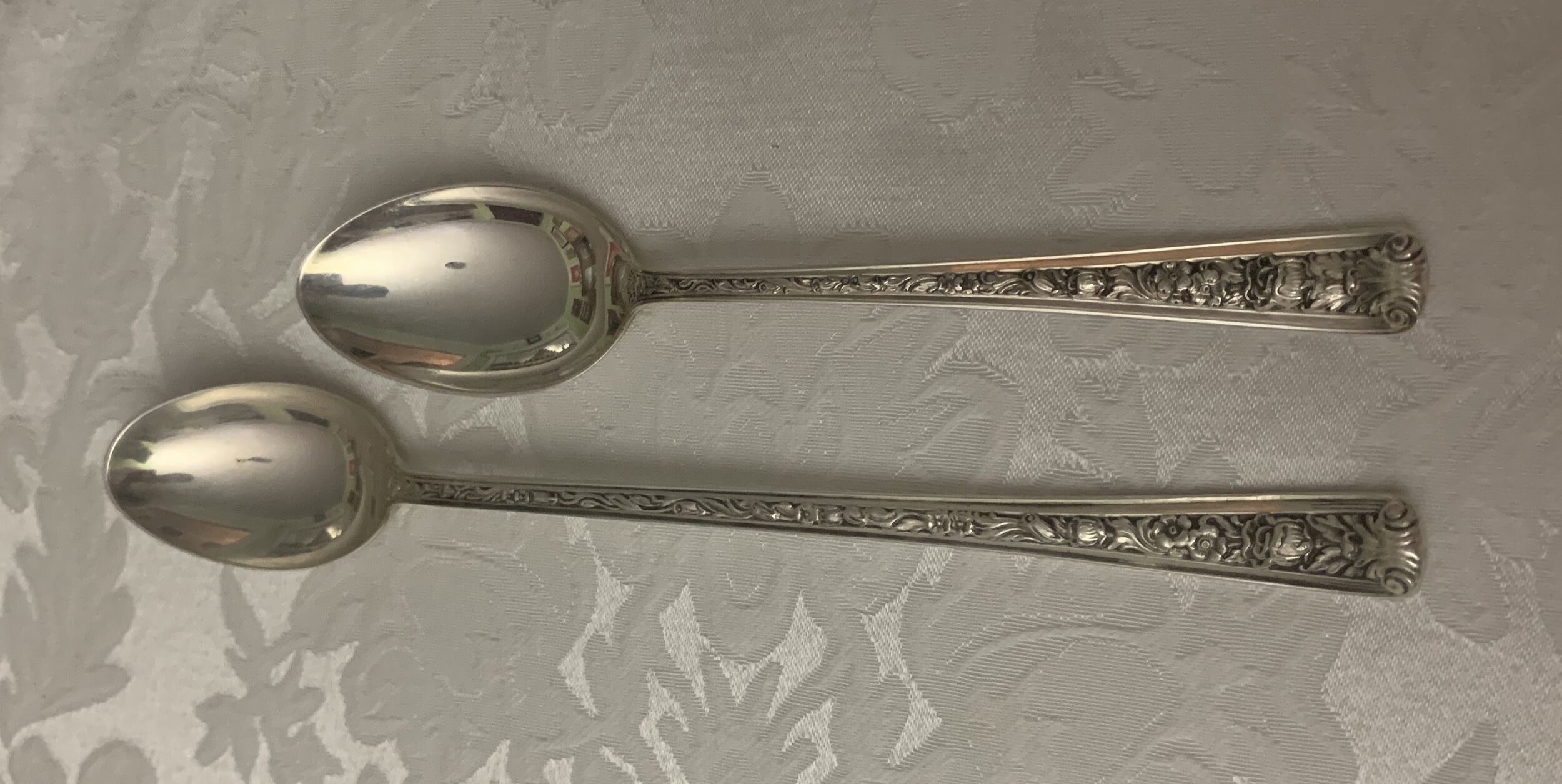Dear Etiquetteer:
I was idly considering the “gravy boat” for my china pattern. It makes sense. It is a low oblong pitcher, with handle, and there is a plate in which it fits. Perfect if you are pouring the sauce (heaven forfend that there be gravy on the table in this house, we only do sauces). This reminded me of the gravy boat from my grandmother’s 1950s set that was never used. It is also an oblong, but with spouts on both ends and it is attached to its underplate. I presume that this one was intended for use with a gravy ladle. Then I started poking about, and there do seem to be a number of “gravy boats” that really are footed, handled pitchers with attached underplates.
Now for the question(s). If the underplate is attached, even if there is a handle and spout, I would presume that piece is to be used with a ladle; pouring would make no sense. Is this true? (In which case the spout and handle are relict, I would think.)
Is the attached underplate peculiar to a particular era? Is there any traceable evolution of the gravy boat that you know of?
Dear Sauced:
Your query sent Etiquetteer off to the pantry to examine Dear Grandmother’s sauceboat*, which falls between your descriptions: a boat-shaped pitcher with a handle, a spout, and an attached underplate. Etiquetteer has always considered it risky to pour directly from this; anything that dribbled onto the underplate could dribble from there to the tablecloth when tilted.
Most of Etiquetteer’s usual resources are silent on this useful implement. Millicent Fenwick** emphasizes how sauceboat shapes were changing, and that sauce tureens — by then considered old-fashioned — could still be practical and not merely decorative. She describes sauceboats as footed and sauce tureens with an underplate.
Emily Post doesn’t even go into that much detail, but makes it clear that it is usual to serve sauce with a ladle. “If there is no ladle — or spoon — you pour the sauce from the sauce boat.” In this century, the Texas School of Protocol advocates adding an underplate whether you use a ladle or not. This may not be strictly formal, but it’s Perfectly Proper, especially for Great Feasts like Thanksgiving (when we are more likely to see Casual Clothes and Good China together).
Etiquetteer will leave the evolution of the sauceboat to Experts in That Field, but will happily direct you to this Ode to the Gravy Boat, which celebrates not only the useful implement, but the gravies and sauces conveyed by it. In the meantime, please continue to provide a ladle when serving your sauce, or gravy. Etiquetteer loves both.
A set of fish knives and fish forks at DartSilver.
Dear Etiquetteer:
The popularity of Downton Abbey leads one to wonder if there is naught but a forlorn hope for the return of the fish fork or that loveliest of blades***, the fish knife. One also wonders how many readers under the age of 70 even know what I am talking about. How fondly I recall dining at the Copley Plaza and having the requisite utensils placed before me, not to mention Dover sole at the Savoy Grill. In the spirit of Etiquetteer’s dinner challenges, might you offer some thoughts on place settings of yore?
Dear Dining:
Alas, the fish knife has disappeared from regular home use. Standard silver services in this century seem to include only five pieces per person, only one a knife. And even at large functions in hotels all the knives look alike with rounded blades; the uniquely pointed fish knife, curved out on the bottom and in on the top, is distinguished by its absence. If the fish knife is to return, Etiquetteer predicts a house to house battle. Let’s start at yours.
Etiquetteer would like to see a bit of regional silver come back: the iced tea spoon. From Richard Osterberg’s Sterling Silver Flatware for Dining Elegance we learn that this long spoon was substituted by Southern brides for cream soup spoons in their silver services. (Cream soup spoons have round bowls; other soup spoons have oval bowls.) Indeed, Dear Grandmother’s service includes only table knives and a legion of butter spreaders — no fish knives, alas! — and no soup spoons of any kind, but it does include iced tea spoons. Etiquetteer will have to put them out for some sort of parfait dessert this winter.
To knit these two queries together, it’s worth noting that the experts of yore all observe that a household without servants should serve as simple a menu as possible, even for a formal dinner. For a fish course, that would mean a fish that is served with its accompaniments, eliminating the need for a sauceboat. Emily Post even suggested serving tartar sauce in a hollow basket of lemon rind. Etiquetteer can’t see why that wouldn’t work for other fish sauces, too.
Iced tea spoon with teaspoon.
*The French call it a sauciére. The Edwardians used to sprinkle bits of French in their letters (and doubtless in their daily speech, too). These days, malheureusement, the practice is considered pretentious. 🧐🤭
**Vogue’s Book of Etiquette.
***What an excellent title for a murder mystery, That Loveliest of Blades! Etiquetteer can’t remember which Hercule Poirot story includes the sentence “It takes considerable strength to drive a table knife home,” but it remains lodged in memory . . . like a knife.



